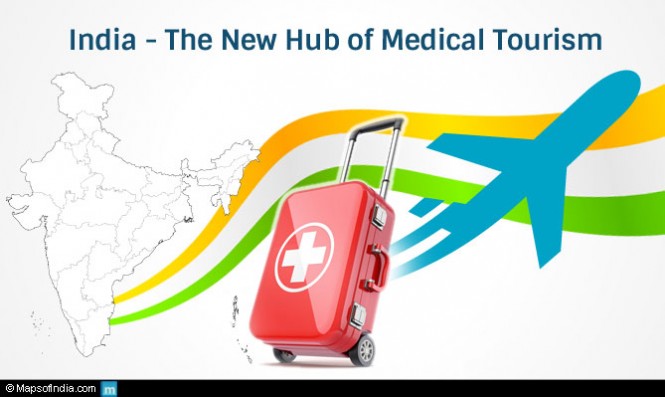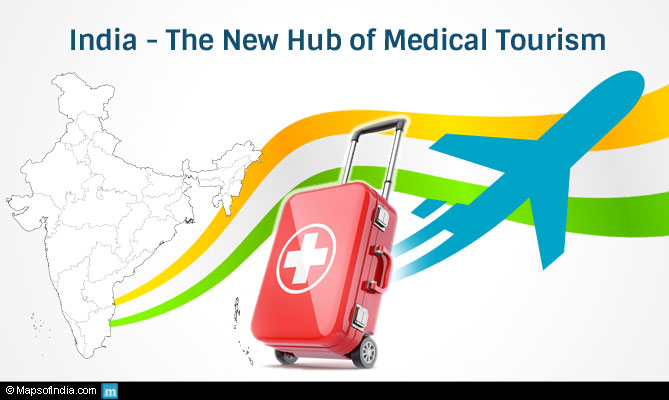 Medical tourism, also known as health tourism, is the process of providing or receiving healthcare across borders. Over the last decade, there has been a significant uptick in the popularity of health tourism in India. Several patients from across the globe are now branching out to countries like India, Hong Kong, Philippines and many more which provide the latest treatment facilities and expertise at affordable prices
Medical tourism, also known as health tourism, is the process of providing or receiving healthcare across borders. Over the last decade, there has been a significant uptick in the popularity of health tourism in India. Several patients from across the globe are now branching out to countries like India, Hong Kong, Philippines and many more which provide the latest treatment facilities and expertise at affordable prices
India is fast becoming a preferred location not only due to availability of highly qualified physicians and well-equipped hospitals but also because of the alternative medical treatments like Ayurveda, Unani, Yoga and Homeopathy. According to an estimate, by the end of 2016 medical tourism will attract as many as five million people globally. This would positively impact medical tourism in India. This also implies that India needs to buckle up and cash in on the advantage it has gained over the years.
India, a land of great cultural diversity, is in a growth phase. After the recent elections and with the advent of a new government it is believed that we, as a nation, are on the path of prosperity and so are the individual sub-sectors of the Indian economy. Heath tourism today serves more than a million tourists from developed countries of UK, US and Canada along with the nations of China, Sri Lanka and Bangladesh. As of 2012, the Indian Medical Tourism industry was estimated at 78.6 US billion dollars and it expected to grow at 15% annually. India is well-recognized for cost-effective treatments in the fields of oncology, nephrology, neuro-surgery, orthopedics and cardiology, with institutions like Fortis, Max and Apollo Hospitals poised to offer world-class healthcare to incoming tourists.
India ranked among Asia’s three leading destinations for health tourism
A 2014 KPMG-FICCI study ranked Indian among Asia’s three leading destinations for health tourism alongside Singapore and Thailand. Keeping in mind the industry prospects, the Ministry of Home Affairs of India came up with a new category of ‘Medical Visa’. Medical Visas are valid for one-year and are essentially issued to the patients along with Medical Attendants Visas for the family members.
The major chunk of the business is being garnered by three states of Delhi, Maharashtra and Tamil Nadu, which is approximately 50% of the country’s total earnings. India has an edge over its competitors over the kind of technology it offers, the infrastructure it possesses and the reverse brain drain. As a result of reverse brain drain, more and more Indian doctors are returning home and transforming their native cities into hubs of health tourism. Coming up of more corporate hospitals are also providing them several opportunities across the country.
New guidelines for the growth of the sector
The Ministry of Tourism has recently finalized new guidelines so as to promote growth in the sector. As announced during a day-long Medical & Wellness Tourism Summit-2014, new set of guidelines will now incentivise the market facilitators and tour operators working in this sector. Consequently, India would see a growth budding up of several Medical Tourism companies which not only facilitate the regular allopathic treatments but also the traditional Indian medicine treatments in Ayurveda and Homeopathy.
As far as the future course of this sector is concerned, investment and infrastructure will be the deciding factors ahead. The primary focus of the sector and the main attraction also, is the infra-segment. However, as a whole, the health sector needs to show much more potential and growth so as to sustain the position. Another barrier to be looked into can be the visa problems where the streamlining of the entire medical process is highly required. Tough competitors of the Indian medical tourism are countries like Singapore and Malaysia which are raising their quality standards for healthcare.
Though the Indian medical sector has come a long way through and also provides a competitive edge over other countries in terms of facilities and affordability, the real problem to tackle is the ever-growing needs of this global sector. Whether India will be able to sustain growth and keep showing a progressive report is yet to be seen.





